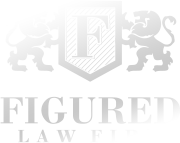Preparing To Testify In Your Workers’ Compensation Case

If you were injured at work, you may end up needing to testify as part of your workers’ compensation claim. For those who have never testified in a legal matter, this can be stressful, so if you were hurt in a workplace accident and have decided to file a workers’ comp claim, it is important to reach out to an experienced Wilkes Barre workers’ compensation lawyer, who can help put you at ease and give you an idea of what to expect when you testify.
Where Will the Hearing be Held?
It comes as a relief to many claimants to hear that testifying in a workers’ compensation matter is not always a formal process. Usually, there isn’t a jury or an imposing courtroom. Instead, a single Workers’ Compensation Judge will be assigned to preside over the case. He or she will oversee your testimony in a hearing office, which is typically a small, relatively comfortable room, although claimants may also find themselves testifying via video conference or deposition.
What Will I Be Asked?
Whether you are asked to testify live in front of a judge, via video conference, or by deposition in your lawyer’s office, you will face basically the same questions, including queries about:
- Your position, job description, and duties;
- The physical requirements of your job;
- How you perform your workplace duties;
- The date you sustained the injury, how the accident happened, the types of injuries you sustained, and your symptoms;
- Whether you reported your injury, and if so, when and how;
- The medical treatment you received, including when you first sought it and who provided it;
- Whether you received any work restrictions from your doctor;
- Whether you have returned to work and if so, whether you worked in a modified capacity;
- Whether you face limitations in your ability to work because of the injury; and
- Your pain level, whether you are able to return to work, and if not, whether you could fulfill a light-duty job.
Once you have been asked these questions by your own lawyer, your employer’s attorney will then be given the opportunity to ask his or her own set of questions during cross-examination. The judge may even chime in with a few questions at this point. You should also expect to receive some questions about any pre-existing injuries, including how they were sustained and whether they contributed to your workplace injury.
What Happens Next?
Once your answers have been presented as evidence in your workers’ compensation case, the judge will deliberate and then issue a decision. That decision will contain a summary of your testimony, as well as a discussion of whether the judge found your testimony to be credible. The judge has the option of accepting your testimony as credible in its entirety, rejecting it as not credible at all, or accepting some of the testimony as credible and other parts as not credible. This determination will largely dictate the outcome of your hearing.
Were You Hurt at Work?
If you were hurt at work, it is extremely important that, before you testify in your workers’ compensation hearing, you work with an experienced lawyer who can ensure that your testimony is well-organized and cohesive. Please call the Figured Law Firm at 570-954-9299 to speak with a Pennsylvania workers’ comp lawyer about preparing for your own testimony.
Resource:
dli.pa.gov/Individuals/Workers-Compensation/wcoa/process/Pages/Frequently-Asked-Questions.aspx
